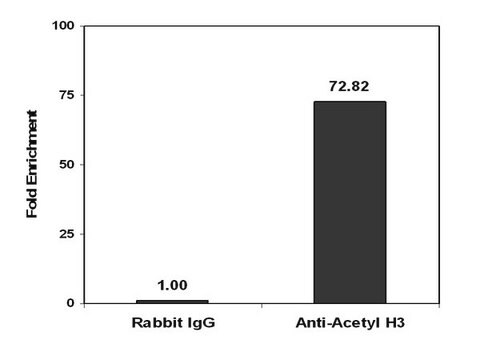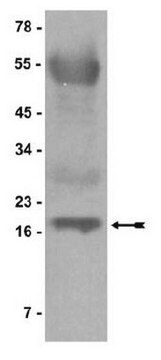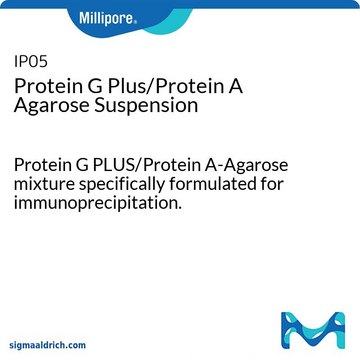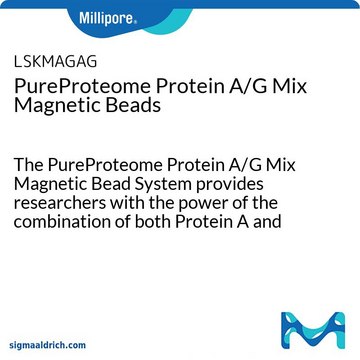PROTAA-RO
Roche
Protein A Agarose
>98% (HPLC and SDS-PAGE), suspension
Sinonimo/i:
agarose, protein a
About This Item
Prodotti consigliati
Saggio
>98% (HPLC and SDS-PAGE)
Stato
suspension
Confezionamento
pkg of 15 mL (05015979001 [settled resin volume])
pkg of 2 mL (11719408001 [settled resin volume])
pkg of 5 mL (11134515001 [settled resin volume])
Produttore/marchio commerciale
Roche
Capacità
>18 mg/mL binding capacity (human IgG (polyclonal))(the IgG is loaded at pH 7.4 and eluted with 200 mM glycine, pH 2.0)
Temperatura di conservazione
2-8°C
Descrizione generale
Protein A leakage: <18 ng Protein A/ml (ELISA)
Regeneration: the gel can be used approximately 30 times
Structure: recombinant Protein A (E. coli, Mr = 45,000) is covalently coupled to crosslinked 6% agarose beads: 3 mg Protein A (>98% pure, HPLC, SDS-Page)/1 ml gel
Protein A, immobilized.
Specificità
Applicazioni
Componenti
Protein A content: 3 mg/ml pre-swollen gel
Qualità
Altre note
Avvertenze
Warning
Indicazioni di pericolo
Consigli di prudenza
Classi di pericolo
Eye Irrit. 2 - Flam. Liq. 3
Codice della classe di stoccaggio
3 - Flammable liquids
Classe di pericolosità dell'acqua (WGK)
WGK 1
Punto d’infiammabilità (°F)
102.2 °F
Punto d’infiammabilità (°C)
39 °C
Scegli una delle versioni più recenti:
Possiedi già questo prodotto?
I documenti relativi ai prodotti acquistati recentemente sono disponibili nell’Archivio dei documenti.
I clienti hanno visto anche
Il team dei nostri ricercatori vanta grande esperienza in tutte le aree della ricerca quali Life Science, scienza dei materiali, sintesi chimica, cromatografia, discipline analitiche, ecc..
Contatta l'Assistenza Tecnica.











